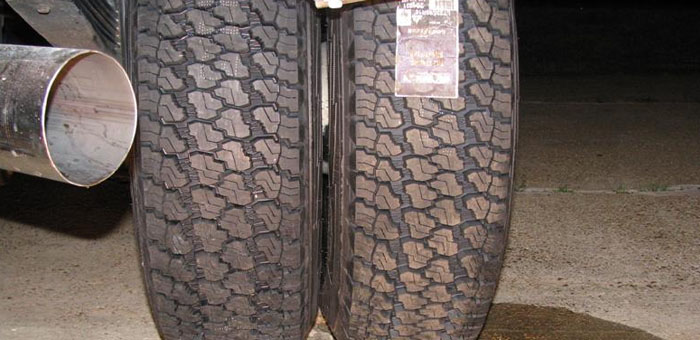“Dually” is a generic term that describes a truck with dual rear wheels on each side of the vehicle, they are commonly seen on many food trucks. Changing the tires on a dually food truck wheel setup may look like hard work, but buy doing it yourself it could save a mobile food vendor some hard earned money they can spend somewhere else in their food truck business.
Changing Tires On A Dually Food Truck
Before you begin changing your food truck truck wheels, make sure that you have all of the proper tools. This includes…
- floor jack (one rated to raise the weight of your truck)
- two heavy duty jack stands
- 24-inch ½-inch drive-breaker bar
- ½-inch drive socket set with larger sockets
- 6-inch extension to ½-inch drive
- 2 wheel chocks
- lubricant
- large hammer
- torque wrench
If you don’t have these tools, it would probably be better to take your food truck to a professional mechanic.
RELATED: Keep The Correct Items In Your Glove Box And Food Truck
The Process
- This first thing to do when preparing to jack up your food truck is place the chocks in front of or behind the tires that you won’t be working on to prevent your vehicle from rolling. In this case they would go in front of your front tires.
- The next step in the process is to loosen (do not remove them all the way) the lug nuts before lifting the vehicle off the ground. This will allow you to exert enough pressure to brake a nut loose without worrying about knocking your food truck off the jack.
- Now, raise the vehicle with a floor jack and place it on jack stands (the ideal location for the jack is under the rear axle). Now you can safely remove the lug nuts completely and remove the wheels you want to work on.
- You then want to remove the outside tire first and the inside tire second. If the inside tire is stuck to the hub you can break it free by spraying the area where they are connected with lubricant and then hitting the sidewall of the tire with a large hammer.
- Fully deflate the tire, using a valve stem remover. Lay the tire on its side. The wall of the tire needs to be compressed enough to force it off the rim. This is also known as “breaking the bead.” Place the tire on hard ground. Drive another vehicle’s front wheel onto the tire until the bead breaks. This may take several attempts. Drive the car onto the tire as close to the rim as possible. When the bead breaks, you will hear a “pop.” Turn the tire over and use the vehicle to break the bead on the other side.
- Soak the wall of the tire with soapy water. Lay the wheel down. Insert a tire spoon or lever in between the tire and the rim; pull a part of the bead over the rim of the wheel. Hold the bead in this position. Place another lever a few inches away from the first and pull more of the bead over the rim. Take the first lever out and insert it further along the bead. Continue this until the tire is off the rim on one side.
- Lift the wheel onto its edge. Turn the wheel so the side of the tire you just removed is facing away from you. Insert the lever between the rim and tire; push the lever away from you until a part of the bead is over the rim. Insert another lever and continue around the tire as above. You may also use a hammer to knock the bead off the rim; rotate the wheel as you tap the tire until it is removed.
- Soak the new tire with soapy water and slip the edge of the tire wall over the rim. Push on the tire until it is on the rim all the way around (you may need a lever to get the last few inches over the rim). Turn the wheel over and work on this side of the tire in the same way. Replace the valve stem and inflate to the recommended pressure.
- Take the wheel to an tire/wheel center for balancing.
Installing New Tires
- When it comes to installing the new wheel, the process is repeated in reverse. Place the inside wheel on first and then the outside. Replace the lug nuts. Remove the jack stands and then lower your vehicle back to the ground. Lastly, tighten your lug nuts and double-check your work.Replace the wheel onto the dually by sliding the rim onto the lug bolts; replace the lug nuts and tighten them with a tire iron.
Please Note: If you have a blow out or a flat rear wheel on your food truck is on the road, have it towed to your commissary or regular over night parking location before working on your dually food truck wheels.
The Bottom Line
Changing the tires on your dually food truck is easy. Follow this process guide to do it properly and safe. Do you have any additional tips? Share your thoughts on this topic in the comment section, our food truck forum or social media. Facebook | Twitter




